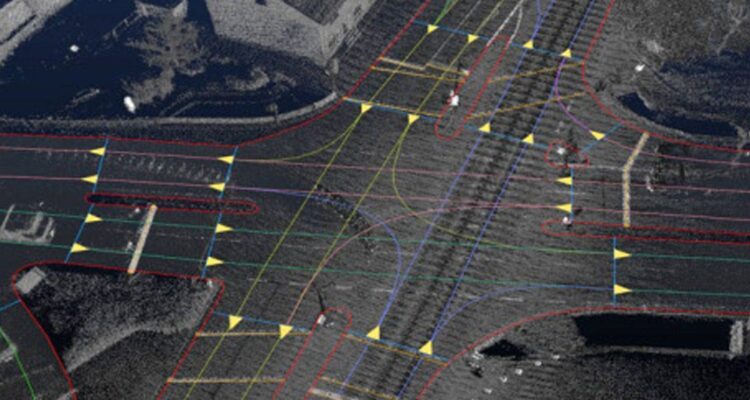


ABOUT ME

SALONI DASH
I am currently a PhD student at the Information School at University of Washington (UW). Previously, I was a Research Fellow at Microsoft Research (MSR) India. My research interests primarily lie in Misinformation & AI. To know more about my research you can head over to the Research section.
In my free time I love cooking, reading, spending time with friends, hiking, acrylic painting, playing my ukelele, sketching, reruns of comfort TV shows, Taylor Swift (evermore is better than folklore, sorry) and anything Harry Potter related!. Above all, I love talking to new people, so please reach out to me if any of this sounds remotely fun! I also sporadically blog about my personal and professional musings (Blog)
RESEARCH
I have been extremely fortunate to have had great mentors who have nurtured and cultivated my research potential. I am currently pursuing my PhD at University of Washington, where I am working with Prof. Emma Spiro on modeling the threats of generative AI for disinformation campaigns.
At Microsoft Research India, I was working with Prof. Joyojeet Pal on studying the spread of political polarization, dangerous speech and disinformation during political crises in India. I was also working with Dr. Amit Sharma and Dr. Vineeth Balasubramanian on counterfactual generation for analysing the fairness of machine learning classifiers.
I have also had the honor of working with Prof. Isabelle Guyon (co-inventor of Support Vector Machines) and Prof. Kristin Bennett for over two years on generating privacy-preserving synthetic health data and time-series medical data using Generative Adversarial Networks (GANs). Please refer to my CV for more details.
My research interests primarily lie in Misinformation & AI. I am interested in understanding and modeling the threats of geenrative models for disinformation operations. I am also interested in leveraging geenrative models for detecting and explaining misinformation and manipulation tactics.
My current research interests are a culmination of my previous research endeavours. In the Healthcare domain I was interested in addressing the problem of making medical data accesible to the public, without compromising privacy. At MSR, I was also interested in studying & characterizing the role of online influencers in spreading polarization, hate speech, & misinformation on social media platforms, particularly during political crises. I also worked on investigating interpretability and algorithmic fairness through the lens of causal inference.
In general, I am interested in Machine Learning, Natural Language Processing, Social Computing, Human Computer Interaction, and Fairness & Explainability.
Please take a look at my google scholar profile for a comprehensive list.
- Saloni Dash, Arshia Arya, Sukhnidh Kaur, Joyojeet Pal “Narrative Building in Propaganda Networks on Indian Twitter” 14th ACM Web Science Conference 2022
- [Honarable Mention for Best Paper Award] Saloni Dash, Rynaa Grover, Gazal Shekhawat, Sukhnidh Kaur, Dibyendu Mishra, Joyojeet Pal “Insights Into Incitement: A Computational Perspective of Dangerous Speech on Twitter in India ” ACM SIGCAS Conference on Computing and Sustainable Societies (COMPASS) 2022
- Saloni Dash, Vineeth Balasubramanian, Amit Sharma “Evaluating and Mitigating Bias in Image Classifiers: A Causal Perspective Using Counterfactuals” IEEE Winter Conference on Applications of Computer Vision (WACV) 2022
- Saloni Dash, Dibyendu Mishra, Gazal Shekhawat, Joyojeet Pal “Divided We Rule: Influencer Polarization on Twitter During Political Crises in India” International Conference on Web and Social Media (ICWSM) 2022
- [Workshop Paper] Saloni Dash, Gazal Shekhawat, Syeda Zainab Akbar, Joyojeet Pal “Extremism & Whataboutism: A Case Study on Bangalore Riots” Extremism Reserach Workshop, CSCW 2021
- [Workshop Paper] Saloni Dash, Amit Sharma. “Counterfactual Generation and Fairness Evaluation using Adversarially Learned Inference”. Explainable Agency in Artificial Intelligence Workshop, AAAI 2021
- Saloni Dash, Andrew Yale, Isabelle Guyon, and Kristin Bennett. “Medical Time-Series Data Generation using Generative Adversarial Networks” Proceedings of the International Conference on Artificial Intelligence in Medicine AIME 2020
- [Workshop Paper] Saloni Dash, Ritik Dutta, Isabelle Guyon, Adrien Pavao, Andrew Yale, Kristin P. Bennett “Synthetic Event Time Series Health Data Generation” Machine Learning For Health (ML4H) Workshop, NeurIPS 2019
- Andrew Yale, Saloni Dash, Ritik Dutta, Isabelle Guyon, Adrien Pavao, Kristin P. Bennett “Generation and Evaluation of Privacy Preserving Synthetic Health Data” Journal of Neurocomputing
You can download my regularly updated CV
PROJECTS

INTERSECTION NAVIGATION FOR AUTONOMOUS AGENTS USING DEEP REINFORCEMENT LEARNING
Self-Driving cars are all the rage now. However, one of the tasks that they still struggle with is navigating road intersections. Explore how to teach an autonomous agent to navigate simple intersections using Deep Reinforcement Learning.

MULTI-AGENT REINFORCEMENT LEARNING FOR COOPERATIVE HUNTING SCENARIOS
Wolves are widely known for their cooperative pack hunting. But why do they hunt in packs? Understand this evolution of cooperation by simulating their behavior using Multi Agent Reinforcement Learning .

EXPLORATORY DATA ANALYSIS FOR SURVIVAL PREDICTION ON TITANIC
To Die ot Not To Die? Learn basic exploratory data analysis tools by extracting features for survival prediction on Titanic. Forsee how Jack didn't stand a chance as compared to Rose to make it till the end of the movie.

SIMULATING LOGIC GATES USING MCCULLOCH PITT'S NEURONS
Mcculloch Pitts neuron was the first computational model of a neuron that inspired the neural nets we see today. Discover how this neuron works through an interactive GUI by inputting neuronal weights that will be used to construct logic gates.